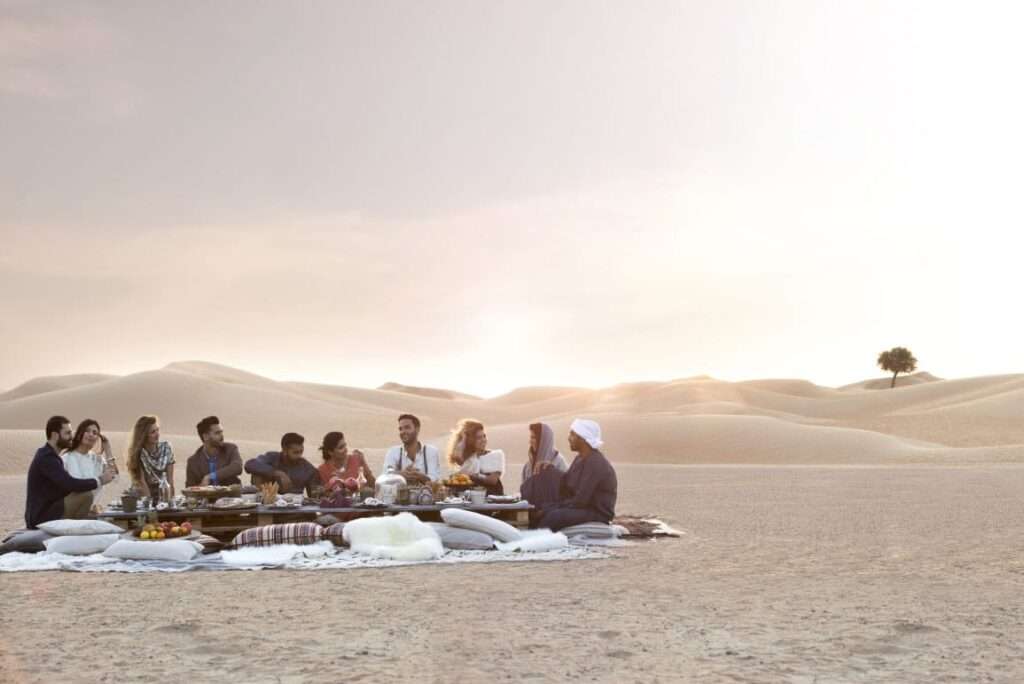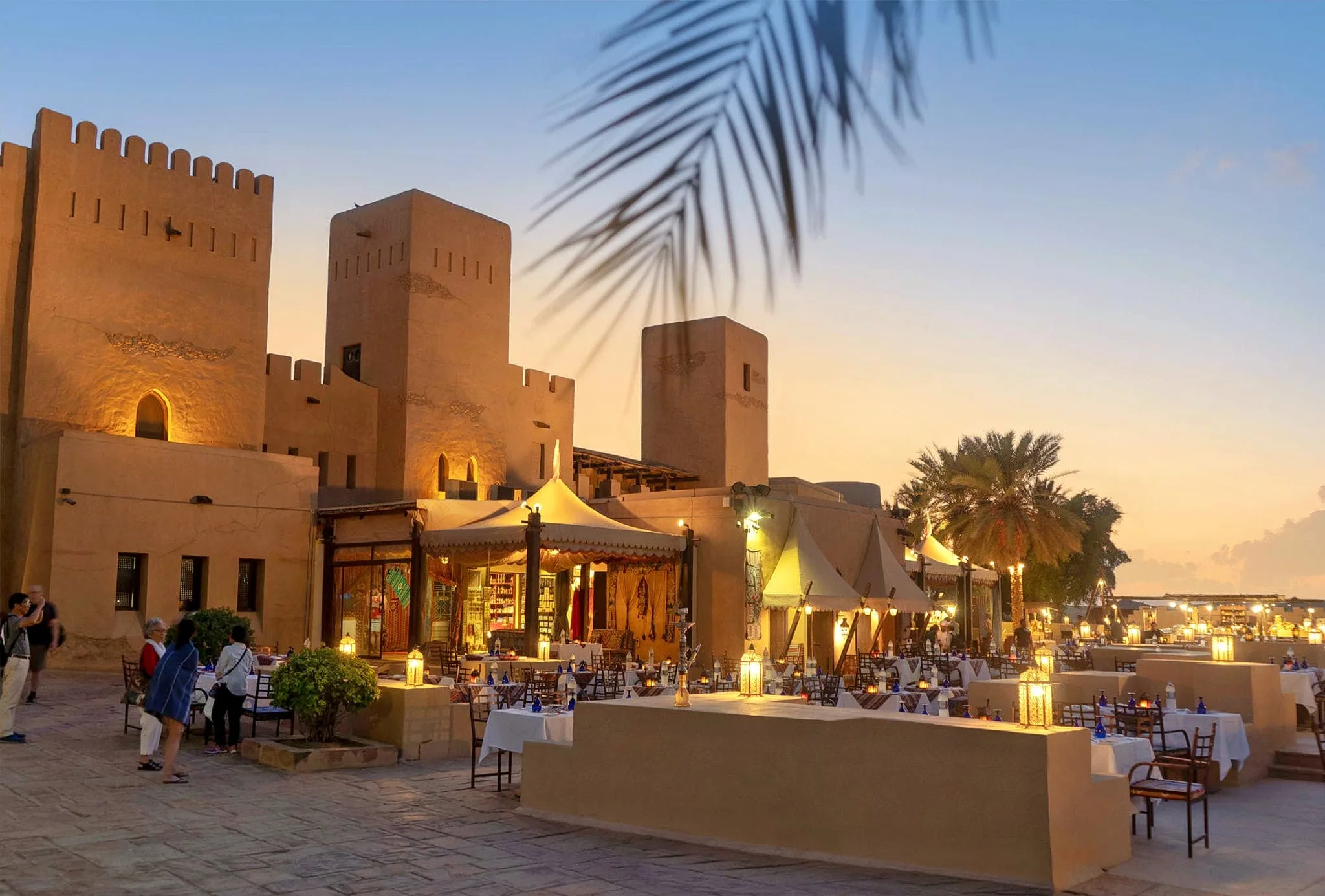Best Time to Visit Dubai Desert in 2025: Experience the Magic at the Perfect Moment
Best time to visit Dubai Desert is a mutual question among tourists—after all, timing makes or breaks the involvement. Whether you’re imagining dune-bashing at sun-up or camping underneath starlit skies, knowing when to go confirms comfort, venture, and security. This guide draws on weather data, skillful advice, insider info, and real tourist experiences to give you a final answer on the best time to visit Dubai Desert, helping you plan the faultless desert trip through BookDubaiTours.com.
Why Timing Matters
Dubai’s desert climate swings dramatically.
- Winter (Nov–Mar): mild by day, chill by night—ideal for outdoor fun.
- Summer (Apr–Oct): sweltering heat with highs over 40 °C (104 °F), safer only in early morning or evening
Sun safety, comfort, availability of activities, and pricing all depend on when you go—making the best time to visit Dubai desert the top factor for a successful safari.
Understanding Dubai’s Desert Climate
Seasonal Breakdown
According to Dubai climate records:
- Winter (Nov–Mar): daytime temps 24–30 °C, night lows 15–20 °C
- Spring/Autumn (Apr–May, Sep–Oct): warming up—28–36°C days, cooler nights.
- Summer (Jun–Aug): peaks at 40–45°C+, severe humidity, sandstorms common.
Rain is minimal (about 100 mm annually), mostly falling Nov–Mar
Desert nights cool quickly post-sunset due to low humidity, which is why understanding the best time to visit Dubai desert can enhance your overall experience
Why This Data Matters
- Best Time to Visit Dubai Desert avoids heat hazards.
- Gradual transitions help you plan layers and gear.
- Weather influences activity availability and wildlife sightings—e.g., Arabian oryx or gazelles appear in cooler months.
Best Time to Visit Dubai Desert
Peak Season: November to March
- Comfort & activity: average highs 24–30 °C, nights 15–20 °C—perfect for full daytime and overnight safaris
- Wildlife & scenery: animals and birds like Arabian gazelles are most active in cooler weather
- Tour options: widest range—all-inclusive packages, quad biking, private VIP options.
- Events & experiences: Dubai Shopping Festival, cultural gatherings, and clear stargazing nights.
Shoulder Periods: April–May and September–October
- Temperature: 28–36 °C days, cooler nights
- Crowds & costs: fewer tourists, moderate pricing.
- Best Time to Visit Dubai Desert applies here for comfortable morning and evening safaris.
Off-Peak: June–August
Summer isn’t the best time to visit Dubai desert—extreme heat can reach up to 45 °C with high humidity, making daytime safaris nearly impossible. While short night safaris or carefully planned early mornings are doable, the intense weather isn’t ideal for comfort seekers. However, it can be a win for budget travelers due to lower prices.
When and Why to Visit: So You Know
Season Avg Day Temp Avg Night Temp Recommended Safari Time Pros Cons
Nov–Mar (Winter) 24–30 °C 15–20 °C Anytime: morning/afternoon/sunset/night Comfortable, rich wildlife, full package availability Peak prices, book ahead
Apr–May, Sep–Oct 28–36 °C 18–25 °C Mornings & evenings Fewer crowds, moderate cost, good weather Still warm midday, fewer overnight options
Jun–Aug (Summer) 40–45 °C+ 26–30 °C Early morning or night only Cheap packages, less crowded Daytime heat risky, limited activities
✅ For a perfect desert adventure, the best time to visit Dubai desert is from November to March, with April, May, September, and October as great alternatives depending on your weather tolerance.
Best Time of Day
- Morning Safari (5–9 AM): lovely cool temps, best for photography and wildlife
- Afternoon/Sunset (3–7 PM): the “golden hour”—sunset vibes, full entertainment package
- Evening/Night (7 PM–midnight): a cool, chill campfire vibe—stargazing and dining.
Expert Voices
Ahmed Al Mansouri, longtime safari guide in Al Marmoom and PDCR, says:
Aim for December to February for unbeatable desert weather—cool mornings, warm days, crisp nights perfect for stargazing.
Conservation data supports this: wildlife thrives between November and March in DDCR and Al Marmoom
Traveler Experiences
“Quad biking was epic, though pricey—I paid 125 AED for 30 mins, not including gear. Book early; you won’t get walk-ins in peak season.”
Dune bashing and camel ride combo was touristy but fun. Going early made all the difference—definitely the best time to visit Dubai desert for a cooler, more enjoyable experience.

What to Pack
Clothing: Comfortable, light layers with a warm layer for cool mornings and nights.
Sun Protection: Sunglasses, a cap, and broad-spectrum sunblock are must-haves.
Footwear: Closed-toe shoes for dune rides and flip-flops for relaxing at camp.
Essentials: Stay hydrated, bring a camera for golden hour shots, and carry a scarf or bandana for dust protection.
Booking Tips
Choose your season on BookDubaiTours.com: winter, shoulder, or summer packages.
Select safari type: morning adrenaline, evening fun, overnight camping, or private VIP.
Add-ons: quad bikes, sandboarding, falconry, and camel rides.
Safety nets: Always pick flexible booking options—rebook if weather changes.
Book early for peak months (Dec–Feb); shoulder seasons allow more spontaneity
FAQs
Q1: Can I go in summer?
Yes, but only early morning or evening/night; day tours are unsafe due to high heat.
Q2: Will I see wildlife?
Winter months bring active wildlife—gazelles, Arabian oryx—and migratory birds in DDCR and Al Marmoom.
Q3: Do overnight safaris chill out at night?
Yes—can drop to 15–20°C; tents and campfires provide comfort.
Q4: Should I pack warm clothing?
Definitely—especially Dec–Feb mornings and evenings.
Sustainability & Conservation
Dubai Desert sites (DDCR, Al Marmoom, Al Wohoosh) are managed reserves preserving local flora and fauna under emirate regulations since the early 2000s.
Guided tourism supports their mission—when you book responsibly, you help the ecosystem thrive.
Conclusion
The best time to visit Dubai desert is unmistakably between November and March—when the weather is pleasant, wildlife is active, and all desert adventures are in full swing, from dune bashing to cultural festivals. Prefer fewer crowds and better deals? April, May, September, and October offer great alternatives. Whether you choose a morning, sunset, or overnight safari, timing it right ensures maximum comfort and unforgettable memories.
Ready to Book?
Visit BookDubaiTours.com, choose your ideal season, handpick your perfect package, and get ready for the desert adventure of a lifetime. This is your chance to experience the best time to visit Dubai desert—your golden moment in the golden sands!




One Response